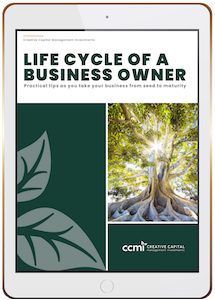Paying taxes is inescapable, and as our wealth and financial complexities grow, so does our tax liability. Developing and implementing wealth management and tax strategies for high-income earners come with special considerations. However, ultra high net worth individuals and families require even more oversight to avoid risks and identify tax-saving opportunities. In addition, with estate, gift, and income taxes increasing, the ultra-wealthy may want to prioritize reducing, avoiding, and managing their tax burden. However, how hefty that tax bill is depends on how well they can leverage coordinated and sophisticated tax-planning strategies. We’ll outline the common challenges, solutions, and considerations ultra-high-net-worth families should consider to help preserve, grow, and transfer their wealth while reducing taxes. Let’s start by explaining what is considered ultra high net worth.
Who Is Considered an Ultra High Net Worth Individual?
Ultra high net worth individuals typically wouldn’t use the term to describe themselves. However, what works for certain income levels and tax situations doesn’t apply to others. So, from a financial planning perspective, it’s helpful to categorize certain asset levels and financial complexity to understand the unique implications and challenges and provide the best support and solutions possible.
How much money do you need to be ultra high net worth?
We define ultra high net worth as an individual or family with wealth that exceeds $25 million in investable assets. Investable assets are assets that can be efficiently invested, such as money in banks and retirement accounts, stocks, bonds, mutual funds and ETFs. Ultra-high-net-worth families also own non-liquid assets such as properties, businesses, and high-value possessions such as art, gold, or cars.
What are other characteristics of ultra high net worth individuals?
Significant financial complexity is another component we consider when categorizing ultra high net worth. While someone may not necessarily have $25 million in investable assets, they may have multiple properties, businesses, or intricate portfolio assets that typically require management by an extended professional team, such as an attorney, CPA, insurance provider, financial advisor, and others.
What Are the Challenges for Those Who Are Ultra High Net Worth?
With several professional and personal entities involved, complexity is a predominant challenge for ultra high net worth individuals and families. From managing businesses and meetings with their professional teams to real estate and family partnerships, the various parts of their financial lives can quickly become fragmented without a coordinated effort.
In many cases, these individuals and families seek clarity that provides a comprehensive view of their finances and a simplified approach to wealth management. For example, at CCMI, we help clients remove the overwhelming aspect of managing several resources through high-level oversight and coordination with their teams, allowing them to take a step back from meetings and stress. We strive to simplify their complex situation while helping them save money and improve their financial outcomes.
It’s important to note that creating a simplified plan as early as possible is critical. Many solutions financial advisors employ for the ultra high net worth are irrevocable, which makes certain decisions, professional relationships, and agreements challenging to untangle once completed.
Tax Challenges of Ultra High Net Worth Families
In addition to complexity, ultra high net worth individuals and families are constantly contending with the burden of taxes during their lifetimes, as well as those left to their heirs following their death. Typically, the ultra-wealthy have to pay income, estate, and gift taxes, which require expertise and balance. For example, there are times when one solution may compete with another or negatively impact other areas. While there is no one solution that solves every challenge, some strategies may be more beneficial than others. As a result, wealthy individuals must consider customized and advanced tax and estate-planning techniques at their asset level to address common questions, such as:
- How do I reduce my income tax?
- Where can I move my money to avoid taxes?
- How will certain financial decisions affect my overall tax liability?
Advanced Tax Planning for Ultra High Net Worth Individuals
Advanced tax planning refers to the several sophisticated and long-term tax-planning strategies ultra high net worth individuals should consider to protect their assets related to income, gift, and estate taxes. Advanced tax planning can include establishing trusts, intergenerational planning, and charitable giving, among other techniques. It’s critical to work with a trusted financial advisor and professional team that understands your unique financial situation to guide you, explain the various options available, and build a customized plan.
Ultra-High-Net-Worth Families Living in California
There’s more to consider depending on the state in which you reside. For example, California is not the most tax-friendly state for the ultra-wealthy, with state income taxes topping 13.3% for incomes over $1 million, including a 1% annual surcharge, as of January 2023. While there is no state estate tax in California, ultra-wealthy residents must pay federal estate, income, state, and gift taxes, which could mean paying up to 50% of their annual income in taxes.
Should I move out of California?
With rising taxes and cost of living, many California millionaires may consider moving away from the state. At CCMI, we often facilitate conversations with families to understand the challenges, such as competing family interests, selling or moving businesses, and managing real estate. While moving is certainly an option, it’s essential to know where income is generated because that’s where clients will continue to pay taxes. There are also different caveats for residents, part-time residents, and non-residents earning income from California.
Gifting Strategies for Ultra High Net Worth Families
Wealthy families gain several tax advantages when they give their assets to either charity or family, and various options and configurations are available to achieve this. Gifting strategies, particularly to family, allow wealthy individuals to move some of their taxable wealth away from their estate, reducing their burden later. However, some common concerns affluent families have when gifting include giving too much too soon or a lack of overall understanding of how to manage significant assets and responsible financial stewardship.
The Annual Gift Tax Exclusion
What is the annual gift tax exclusion?
When giving within the annual threshold for gifts, as outlined by the IRS, you won’t owe any taxes on your gifts, referred to as the annual gift tax exclusion. Many wealthy clients see this as a way to reduce their estate’s value while providing a sort of advance on inheritance to loved ones.
For 2023, individuals can give up to $17,000 per year, per person, for unlimited people.
Annual gift tax exclusion example: You can give $17,000 to each of your children and grandchildren each year. Additionally, if you have a spouse, they can also give the same gift amounts annually, as the exclusion is per individual, not per family.
Which gifts don’t count toward the annual gift tax exclusion?
- Gifts to eligible charities
- Gifts to spouses who are U.S. citizens
- Gifts that directly pay for someone’s medical expenses
- Gifts that directly pay for educational tuition
You can always gift more than the annual exclusion; however, gifts beyond the exclusion will count toward your lifetime gift threshold and possibly require you to pay taxes later. Any gifts below the exclusion do not count toward your lifetime gift tax.
The Lifetime Gift Tax
What is the lifetime gift tax?
In 2023, the lifetime gift tax is $12.92 million per individual, which could mean up to $25.84 million per married couple. Individuals only pay lifetime gift taxes once their gifts exceed the lifetime threshold. Remember, annual gifts below the $17,000 limit do not count toward the lifetime gift limit; however, any gift above $17,000 will count toward the lifetime total. In addition, the annual exclusion and lifetime gift tax are adjusted annually for inflation, which may provide additional opportunities to give without tax consequences.
Lifetime gift tax example: If you give one child $16,000 this year, you will not owe taxes on that gift or affect your lifetime gift limit. However, if you give another family member $25,000 this year, $8,000 ($25,000 − $17,000) will be deducted from your $12.92 million lifetime gift limit and must be reported on that year’s tax return. While the $8,000 is not taxable for income tax purposes, this gift increases potential estate tax exposure by $8,000 at the death of the donor.
With the annual gift exclusion and lifetime gift exemption for individuals and married couples, wealthy families have several options for reducing their taxable estate.
Philanthropic Planning for Ultra High Net Worth Families
Philanthropic giving is another valuable and efficient tax-planning strategy for ultra high net worth families. A family may use several methods to ensure they’re fulfilling their charitable goals during their life and after death. For example, many high-net-worth families may consider a donor-advised fund. This charitable account allows the donor to make a charitable contribution, receive an immediate tax benefit, and direct the donations from the fund to their selected charities over time. However, at the ultra-high-net-worth level, other philanthropic techniques may be better suited and offer more advantages and longer-term solutions.
Establishing a Family Charitable Foundation
A family charitable foundation may be a good, long-term solution providing tax benefits and a philanthropic legacy. With a family charitable foundation, the family controls the mission and distributions, which helps provide consistent, long-term donations to a cause important to them. Designated as a private non-profit, contributions to the foundation can also help reduce income and estate taxes or capital gain taxes when a highly appreciated asset is donated.
Several tax rules are in place to prevent abuse, so it’s important to work with your legal and financial teams to cover what’s permitted, such as employing family members and minimum distribution requirements. Establishing a family foundation is another example of how coordinating efforts between various partners, including tax professionals, financial planning, family members, and attorneys, can provide a better understanding of requirements and other considerations.
Qualified Charitable Distributions
What is a qualified charitable distribution?
A qualified charitable distribution (QCD) is another strategy that can help reduce tax liability while providing an avenue for charitable giving. QCDs are for people subject to required minimum distributions (RMDs) from a qualifying IRA. An RMD is an amount retirees must distribute from certain retirement plans once they’ve reached the federal RMD age. In 2023, the RMD age is 73. Once triggered, the RMD gradually increases each year.
RMDs count toward taxable income, so if you don’t need the income or risk greater tax liability in a higher tax bracket, you can consider a QCD, which allows you to donate up to $100,000 to an eligible charity. The donation is made directly to the charity from the IRA account. There are a few reasons you may consider a QCD, such as:
- If you don’t want to take an RMD that increases your taxable income and may affect your tax bracket
- To lower your IRA assets, which also decreases your RMD amount in the future
- To support a charity or charities with a significant gift if you don’t need additional income from the RMD in that year
Other requirements and factors to consider with QCDs should be discussed with your tax and financial planner.
Estate Planning for Ultra High Net Worth Individuals and Families
What is the estate tax exemption?
Among other directives, such as approved medical treatments and powers of attorney, an estate plan outlines how assets will be distributed following one’s death. When transferring assets, heirs may be subject to an estate tax based on the inheritance amount. However, the estate tax exemption is the amount somebody can inherit without paying taxes. In 2023, the estate tax exemption is $12.92 million, which means many families won’t have to worry about paying estate taxes.
What is advanced estate planning?
However, ultra high net worth families may still have to pay estate taxes. Advanced estate planning involves sophisticated strategies to help move wealth out of a sizable estate while achieving tax benefits, fulfilling philanthropy, and securing heirs’ financial futures. Reducing the total value of their estate is a primary concern for many ultra-high-net-worth individuals. We’ve already discussed how giving can be an efficient way to do this. We’ll outline some of those methods next.
Trust-Based Philanthropy
What is trust-based philanthropy?
Trust-based philanthropy gives the grantee the power to use funds that have been committed in multi-year agreements with less restrictive ways to fulfill its goals. It’s based on collaboration, trust, and flexibility so charities can take timely, efficient action. In addition, contributions will continue to reduce your taxable estate.
What are the benefits of trust-based philanthropy?
Trust-based philanthropy is gaining popularity, as it’s shedding light on some of the past inefficiencies of charitable giving, such as burdensome paperwork and application processes, social inequities, and funds only covering core costs and not project-led initiatives. If you want to learn more about how trust-based philanthropy works, please contact our team.
Charitable Remainder Trusts
What are charitable remainder trusts (CRTs)?
A few giving vehicles allow you to generate income while managing your tax liability, and a charitable remainder trust (CRT) is one of those options. A CRT involves making irrevocable contributions to a fund that generates income, provides a tax benefit, and donates the remaining funds to a charity or charities of your choice upon your or your beneficiaries’ death. CRTs are another opportunity to reduce taxable income by allowing grantors to receive tax deductions when making contributions and defer capital gains taxes when donating highly appreciated assets.
CRTs generate income because there is a distribution a grantor must make to themselves or designated beneficiaries for a set number of years, not to exceed 20, or until death. Once the terms are reached, the remaining funds are distributed to charitable beneficiaries. The trust is generally structured to ensure that at least 10% of the fund’s assets are donated once the terms are fulfilled.
What are the different types of CRTs?
- Charitable remainder annuity trust (CRAT)—CRATs generate a set income payout every year and do not permit additional contributions. The payout amount is calculated based on a percentage when the trust is established and does not change with the trust’s value. You may choose this option to ensure you receive a set amount each year without the effects of market variability.
- Charitable remainder unitrust (CRUT)—CRUTs generate income based on a percentage of the trust’s total value each year and permit additional contributions. Since the income payout changes with the trust’s value, it could provide higher income amounts if the trust performs well over time.
Grantor Retained Annuity Trusts
What is a grantor-retained annuity trust?
Grantor-retained annuity trusts (GRATs) are another tool to reduce estate tax liability. With GRATs, the grantor, the person who creates the trust, contributes a portion of their assets, from which they draw an annuity for a set number of years, which is a percentage of the value of the trust or as outlined in the term agreement. When the term is fulfilled, any remaining assets are transferred to the beneficiaries with a minimal tax burden.
What are the benefits of GRATs?
While GRATs are irrevocable, they are a way for wealthy families to gift a large number of assets to family members, continue to draw income, and reduce their estate taxes through the transfer of assets. There are a few considerations to be aware of, such as if the grantor dies before the trust expires. It’s essential to consult a professional to understand the terms of these types of trusts.
Intentionally Defective Grantor Trusts
What is an intentionally defective grantor trust (IDGT)?
Similar to a grantor trust outlined above, an IDGT contributes a portion of assets for estate planning purposes while also allowing the grantor to receive income and pay taxes on the income and interest generated.
What are the benefits of an IDGT?
An older grantor may establish an IDGT to reduce their taxable estate while covering the income tax for younger beneficiaries. By paying the income tax on the trust assets, grantors can potentially transfer more appreciated wealth to their beneficiaries. IDGTs are irrevocable, so before establishing one, you should consider the income required to pay the income and interest taxes on the trust’s assets and your beneficiaries.
Risk Management for Ultra High-Net-Worth Individuals
As your financial landscape becomes more complex, you should also be aware of other risks that may affect you.
- Insurance Needs: Wealthy families with significant assets have much more to lose, especially if there is a lack of coverage that does not consider the family’s total financial picture. With more entities and assets to manage and a higher vulnerability to threats such as fraud, it’s crucial to consult with an insurance specialist to ensure sufficient coverage to protect your assets best. At CCMI, we can recommend insurance specialists for your needs and help coordinate the decision-making process together.
- Risky Strategies: At this level of wealth, loss aversion is a common concern, as individuals struggle with the inevitability of losing a portion of their wealth to taxes. It’s not uncommon to seek a magic solution to preserve as much as possible. At CCMI, we typically caution clients against strategies that seem too good to be true or straddle the line of legality. Instead, we focus on practical and actionable methods.
- Family Dynamics: Managing interpersonal relationships and possible conflict is another unavoidable duty of ultra-high-net-worth families. We like to take a collaborative approach to wealth management that considers a family’s values, goals, and future generations. In addition to being a financial partner, we can help facilitate family conversations that benefit all parties involved to better understand and address the tax implications of estate plans, inheritances, generational planning, changes in marital status, and more. The outcome is a trusted financial partner that’s thoroughly familiar with the family.
How CCMI Can Help Ultra High Net Worth Families
At CCMI, our team of fee-only financial advisors work with clients, their professional teams, and families to build simplified, unified strategies and plans that help ultra-high-net-worth families manage their unique financial and tax situations. We typically help our clients with the following:
- Collaboration: Our team can be a point of contact to help coordinate efforts and cooperation with other professional partners, such as attorneys, CPAs, insurance specialists, business partners, and more. We can be a trusted resource in such tasks as drafting estate plans, selling a business, or selecting insurance. A financial partner that considers your entire financial picture and understands the cross-dependencies of the various money matters of your life is critical to holistic wealth management. This streamlined approach allows clients to claim more of their time, focus their attention and resources, and reduce the confusion from managing several groups.
- Centralized Management: In addition to monitoring the multiple financial aspects of a client’s life, CCMI can consolidate your finances and communicate quarterly and annual reports, market updates, and tax-saving opportunities as they arise. This is another example of how clients can simplify the planning process while keeping informed of their portfolio’s progress and goals.
- Emotional Support: We understand there are emotional ties and deep-rooted mindsets behind financial decisions. We often work with clients to navigate these feelings while fulfilling their tax obligations using simplified, straightforward methods. The clarity in planning helps clients move forward strategically and with more ease.
Ultra high net worth families face unique challenges in managing significant assets, family interactions, and financial complexity. Tax planning is another component affluent individuals must address to maximize what they keep and minimize liability for themselves and their beneficiaries. Simplification and clarity are possible with a straightforward, comprehensive approach. Learn more about how we can provide a high-level view of your finances and calibrate the various moving parts of your life to optimize your tax planning for years to come.
PLEASE SEE IMPORTANT DISCLOSURE INFORMATION at https://myccmi.com/important-disclosures/
CCMI provides personalized fee-only financial planning and investment management services to business owners, professionals, individuals and families in San Diego and throughout the country. CCMI has a team of CERTIFIED FINANCIAL PLANNERTM professionals who act as fiduciaries, which means our clients’ interests always come first.
How can we help you?






